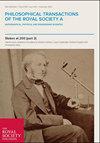The European collaborative programme on evaluating the performance of shaking tables
Philosophical Transactions of the Royal Society of London. Series A, Mathematical and Physical Sciences
Pub Date : 2001-09-15
DOI:10.1098/rsta.2001.0861
引用次数: 43
Abstract
This paper describes a concerted performance appraisal of four of Europe's large shaking tables. Three of the shaking tables were capable of controlled motion in all six degrees of freedom, while the fourth was constrained to move in the three translational axes only. The principal study was the fidelity of the input motion at the testpiece. At all four tables this was found to be satisfactory, but, in one case, the time taken for the tuning process was often more than one hour, and in all cases highly trained and experienced operators were required. Even so, the tuning process was ‘out of real time’, which required that the physical properties of the testpiece should not change during the tuning process. This meant that controlled nonlinear specimen behaviour could not be studied experimentally. This was a major drawback, since modern economic design requires use of nonlinear material properties, leading to progressive failure of redundant members, but not total collapse. The studies did, however, have a major beneficial effect in showing that existing control systems were out of date. Further research programmes were therefore started which have already had the major consequence of producing ‘real–time’ control of shaking tables.评估振动台性能的欧洲合作计划
本文描述了欧洲四个大型振动台的协同性能评价。其中三个振动台能够在所有六个自由度上进行控制运动,而第四个振动台只能在三个平移轴上移动。主要研究的是输入运动在试样处的保真度。在所有四个表中,这都是令人满意的,但是,在一个情况下,调优过程所花费的时间通常超过一个小时,并且在所有情况下都需要训练有素和经验丰富的操作员。即便如此,调优过程是“非实时的”,这就要求在调优过程中,测试件的物理特性不应该发生变化。这意味着不能通过实验研究受控的非线性试样行为。这是一个主要的缺点,因为现代经济设计需要使用非线性材料特性,导致冗余构件的逐步破坏,但不会完全崩溃。然而,这些研究在表明现有的控制系统已经过时方面确实起到了重要的有益作用。因此,进一步的研究项目开始了,这些项目已经对振动台的“实时”控制产生了重大影响。
本文章由计算机程序翻译,如有差异,请以英文原文为准。
求助全文
约1分钟内获得全文
求助全文
来源期刊
自引率
0.00%
发文量
0

 求助内容:
求助内容: 应助结果提醒方式:
应助结果提醒方式:


